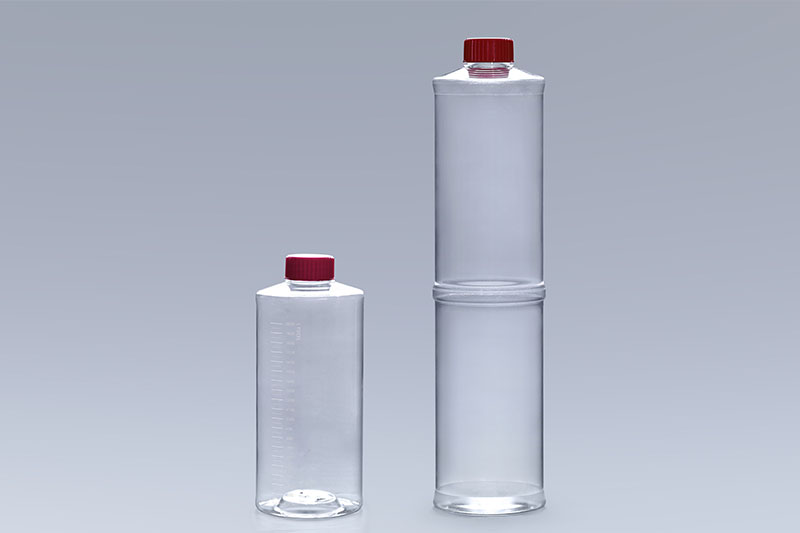Among the many cell culture methods, the cell culture roller bottles culture technology is favored by many pharmaceutical companies and research institutions because of its low cost and rapid cell culture in vitro.
Cell culture spinner bottle is a high-quality consumable that can meet the large-scale production requirements of cells and tissues in both experiments and industrial production. It is widely used in the cultivation of animal and plant cells, bacteria, and viruses. The cell culture roller bottles culture technology has the following advantages:
1. Provide a larger growth surface area for cells;
2. Slight rotation can prevent some components formed in the culture medium from possibly affecting cell growth;
3. There is no need for any treatment such as digestion, just take out the cell spinner bottle on the roller bottle machine and place it under the cell observation table for observation;
4. It is convenient to observe and monitor the growth status of cells at any time, which is conducive to control;
5. The nutrient amount per unit cell growth area is larger, which is more conducive to the collection of cell metabolites, etc.; the operation is simple and the cost is low.
As a cell transition stage before the maturity of large-scale culture technology, cell culture roller bottles culture technology is an important step in optimizing various culture conditions (serum concentration, cell density, inoculation time) from laboratory scale-up to workshop production. With the continuous development of my country's life science field, this culture method will be more widely used.
The FAI climbed 5.9 percent year-on-year in the first 11 months of 2018, quickening from the 5.7-percent growth in Jan-Oct, the National Bureau of Statistics (NBS) said Friday in an online statement.
The key indicator of investment, dubbed a major growth driver, hit the bottom in August and has since started to rebound steadily.
In the face of emerging economic challenges home and abroad, China has stepped up efforts to stabilize investment, in particular rolling out measures to motivate private investors and channel funds into infrastructure.
Friday's data showed private investment, accounting for more than 60 percent of the total FAI, expanded by a brisk 8.7 percent.
NBS spokesperson Mao Shengyong said funds into weak economic links registered rapid increases as investment in environmental protection and agriculture jumped 42 percent and 12.5 percent respectively, much faster than the average.
In breakdown, investment in high-tech and equipment manufacturing remained vigorous with 16.1-percent and 11.6-percent increases respectively in the first 11 months. Infrastructure investment gained 3.7 percent, staying flat. Investment in property development rose 9.7 percent, also unchanged.
 English
English



















































 Cell Culture Roller Bottles
Cell Culture Roller Bottles